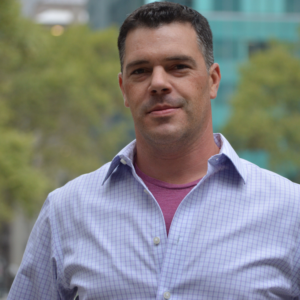
When a prospective employee is about to sit down for an interview with your company, what does it look like on your end? Has your interview panel been carefully chosen in advance? Has it been briefed on the candidate and had plenty of time to look over their resume and other materials? Did they huddle beforehand to hammer out the questions they want to ask?
In a perfect world, the interview process would always be well-planned and executed. In reality, interview panels are often assembled at the last minute and include whoever happens to be around that day. They are missing key team members while including others who probably shouldn’t be present at all. Nobody has been prepped in advance, and it’s clear that some are reading the resume for the first time.
It’s not a good look for your organization, especially when so many companies are competing for the same top talent. Why should that candidate consider joining your team if it can’t even get the interview process right?
Badly organized interview panels are a waste of time for everyone involved. They’re a poor use of your company’s valuable team members, both those who are present and those who may have to conduct follow-up interviews later on. And they aren’t even good at identifying the best candidate for the job.
At Averity, we advise companies of all sizes who are facing challenges in the hiring process. One problem that comes up again and again is the difficulty of putting together the most efficient interview panel. In reality, it’s not hard at all. It just takes careful planning beforehand and picking the perfect group of people.
Picking the right people. After your recruiter decides that a prospective employee is a good match for an open position, they will pass that information along to the appropriate manager or department head. That’s when they should start putting together the interview panel.
The makeup of the panel is extremely important. That doesn’t mean they have to be on the executive team. Unless your company is an early-stage startup, it doesn’t make sense to have a CEO interviewing a mid-level engineer. Look for people who will have some kind of regular contact with the employee.
The size of the panel can vary, but it’s usually between three and five people. For most companies, we usually recommend that a panel include:
A manager. If possible, this should be the supervisor for the role the candidate is interviewing for. This person will be able to address the specific responsibilities of the position, and make a great first impression.
A couple of engineers. They should ideally be from the team with the open position. They should be able to talk about how members of the team work together and what a typical day might include.
A representative from senior management. This might be a director or a vice president. This person is on hand to address the company’s current goals and its vision for the future.
Remember that it can take a week or two to find a time everyone can get together for the interview. This is especially true if it’s going to be an in-person interview. It’s a good idea to get the interview on everyone’s calendar as soon as possible.
It’s not uncommon for someone to have to miss a meeting. Have alternates in mind, and let them know in advance.
Running the interview. The panel should meet together at least 10 minutes before the interview to brief the members about the candidate and discuss their qualifications. It’s a good idea to prepare a list of questions in advance and divide them among all the panelists in advance.
One person on the panel — most likely the manager — will serve as the facilitator for the interview. They run the meeting, make sure it starts and ends on time, and outline the process to the candidate. Remember that the facilitator doesn’t necessarily have to be the highest-ranking person in the room.
The rest of the panel are fact finders. They will have assigned questions to ask, but should all pay close attention, take notes, and ask follow-up questions when necessary. It’s very important that the facilitator and panel are on the same page about what type of person and which skills are essential.
The interviewer should also leave plenty of time for candidates to get their questions answered. These days, engineers are interviewing you as much as you’re interviewing them.
At the end of the interview, the facilitator should finish by letting the candidate know what the rest of the process will be and how long it will likely take. This ends the meeting on a professional note.
An interview process requires work, so avoid the temptation to “wing it.” With careful planning they can be a positive experience for everyone involved.


Create an Account or Sign In